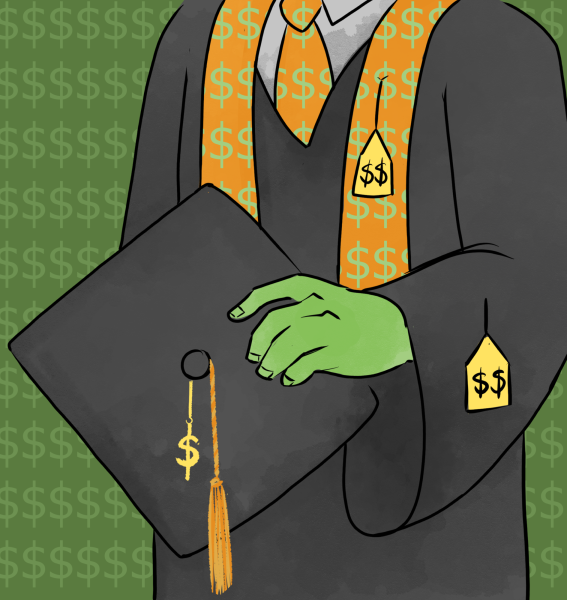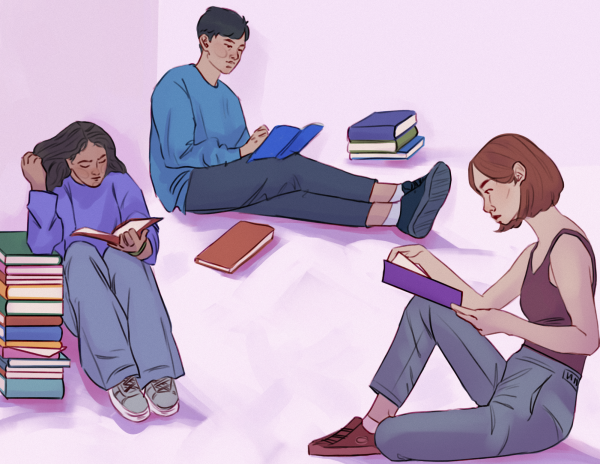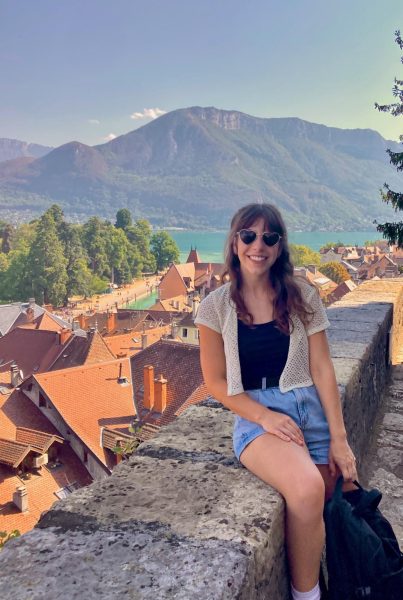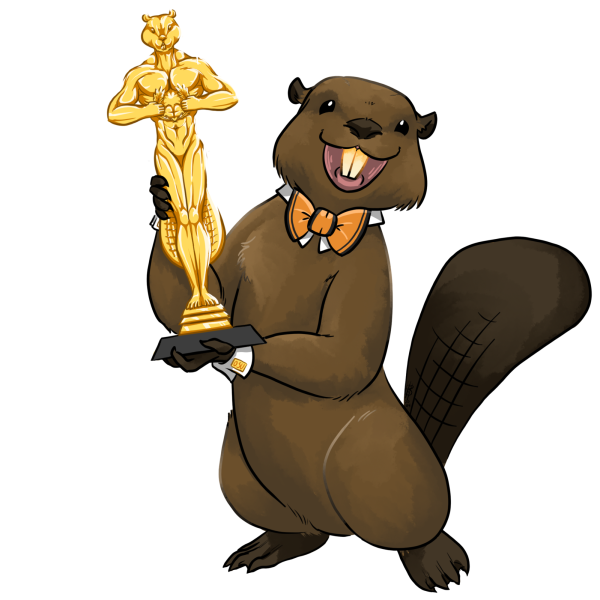The Culture Corner: A reflection on the term AAPI and its challenges
The continuing challenges of a term that represents too many people and underrepresents communities it sets out to highlight
May 2, 2023
Editor’s Note: This column does not represent the opinion of The Daily Barometer. This column reflects the personal opinions of the writer.
In recent years, we’ve seen a growing use of the term AAPI, Asian American Pacific Islander. But does it really represent all the people it claims to?
This term is mainly used to describe people of all identities and backgrounds relating to heritage or connection to countries and regions within the Asian continent and the Pacific Islands.
The U.S. Census Bureau first used the term “Asian and Pacific Islander” in the 1980s as a category to group peoples of Asian ancestry. Later, in 2000, the category would be separated into “Asian Americans” and “Native Hawaiians and Other Pacific Islanders.”
As we celebrate AAPI month, we’re in a time where education and awareness on our issues is becoming ever more prevalent. The term AAPI, that has remained in the common vernacular when referring to people of over 60 countries full of distinct cultures and identities. The term has minimized problems of specific groups, left out communities that are not conventionally a part of the stereotype of being “Asian” and a whole multitude of other issues.
“‘Historically Asians and Pacific Islanders were grouped together by government classifications,’” said Tihani Mitchell, a first-year political science major, who identifies as Native Hawaiian and Tahitian, quoting the Asian Pacific Institute on Gender-Based Violence. “I guess that kind of says it all, you know, we were grouped together because of classifications. And while our different, minority backgrounds share a lot of commonalities, we’re so diverse and we’re so different.”
One common issue with the term is media representation and how certain communities are portrayed on screen and in the stories that are written about them. Many minority groups within specific AAPI countries often don’t have their stories told.
Mavi Brar, a fourth-year public health major, said as a Punjabi Indian American, there’s not enough coverage for people to know anything about her culture and religion, Sikhism.
“Unfortunately, my community doesn’t receive the attention that we need, even living in America, and it’s sad that many people don’t even know about us despite Sikhism being the fifth-largest religion in the world,” Brar said.
Brar said even major issues affecting her community back in India had little to no coverage, like the 2020-21 farmers’ protests.
“Farmers from all over India… blocked major highways into the city of Delhi for a whole year and peacefully protested until the laws were repealed… This was the world’s largest protest, yet many people I’ve talked to over here don’t know about it, because there was not enough media representation,” Brar explained.
There are many cases of “minority” communities with significant population sizes in the U.S. that often get less media coverage. For example, the Hmong population is the ninth-largest AAPI community in the US, but are rarely discussed in the media because they don’t come from a specific country; rather, they are from multiple countries.
Even with on-screen AAPI representation, many communities that get the chance to be featured are pushed to the side in favor of people that are seen as the conventional “Asian”.
For example, in “Crazy Rich Asians,” a movie set in Singapore that received rave reviews, casting missed the mark on bringing in representation that actually portrayed the true diversity of the island.
Singapore consists of a variety of different ethnic groups including Chinese, Indian, Malay and other Southeast Asian cultures. The movie mainly shows wealthy Chinese characters and excludes more marginalized Asian cultures that typically have darker skin tones.
Mitchell expressed similar sentiments with colorism in the casting of the upcoming live-action remake of “Lilo and Stitch”.
“My issue is that it’s not about heritage, it’s about representation… There are certain things that people that are just from Hawai’i can’t talk on, because you’ll never be able to understand it,” Mitchell said.
Mitchell also discussed representation issues among the term AAPI for Native Hawaiians and Pacific Islanders as a whole.
“It really upset me that we are grouped with other Asian communities because this was yet another Western European mindset that just allowed for more ignorance… One of the big things that hurt me specifically when I moved to the mainland from Hawai’i was how Native Hawaiians were hardly recognized as an independent and Indigenous community,” Mitchell said.
Typically, Native Hawaiians and other Pacific Island identities like Fijian, Marshallese, Samoan, Papua New Guinean and many more are not invited to conversations and spaces dedicated to AAPI, even though they comprise literally half of the AAPI term.
According to Michell this erases aspects of history and culture that are crucial to Pacific Islander culture.
“My culture and my history is so important to my identity as an Indigenous woman, and I think that other Asian Americans and Pacific Islanders could say the same thing,” Mitchell explained.
Prior to coming to Oregon State University, Mitchell taught Native Hawaiian history and has always had a strong connection to her community and culture, to the point where she previously wanted to take on Native Hawaiian history as a major. She even learned the Native Hawaiian language, ʻŌlelo Hawaiʻi, for six years prior to OSU.
“I took a level five language, ʻŌlelo Hawaiʻi, back in my old school, but it was an issue in transferring the credits because, (OSU) didn’t really see it as a language, because they didn’t teach it at OSU. Just because you don’t teach it doesn’t mean it’s not a language. That doesn’t mean that I didn’t go all the way and take the six years of schooling to learn the language,” Mitchell said.
This experience illustrates the lack of representation in language classes for cultures that aren’t usually associated with western perceptions of “Asian,” mainly Pacific Island languages and non-East Asian languages.
Mitchell, who is also from Hawaii, said she didn’t feel immediate belonging when she went to her first meeting for Hui’ O Hawai’i, OSU’s Hawaiian student association.
“Normally I’m not this fair skin(ned), I haven’t been home in six months, so I was a lot darker back then,” Mitchell said. “But I just got a lot of weird looks walking into the room, which really made me feel uncomfortable and kind of ruin(ed) my mood off the bat. And I shared that same opinion with a few of my other fellow peers that look like me.”
Michell is not alone in this experience at OSU in trying to get involved with cultural clubs.
“I once tried to go to a few (Vietnamese Student Association) meetings, and everyone was super friendly, but I just couldn’t shake the feeling that I didn’t belong there,” said Carrington Fastelin, a fourth-year public health major. “Especially because sometimes they would talk about issues that they were experiencing racially, but I couldn’t connect to any of them.”
Due to the nature of how race and ethnicity is discussed in this country, a lot of people often discuss the topic through a binary lens without considering the intricacies and intersectionality of cultures and experiences.
Sometimes members within the AAPI community disregard issues that affect commonly marginalized groups due to colorism, racism and other factors. Some of these groups include adoptees, multiracial people, darker-skinned groups and more.
Fastelin identifies as a Vietnamese transracial adoptee (TRA). She learned about this term while looking for an honors college thesis topic and said she has never felt more connected to her identity than during her time researching this topic.
According to Fastelin, TRA refers to an adopted person who has to navigate understanding their own race while being raised in or around another race.
“I grew up in a white family, and a very white community in town, so finding where I belong is really difficult,” Fastelin explained.
Fastelin also discussed how many TRAs are not accustomed to the intricacies of their own heritage.
“A lot of times, TRAs have ethnic socialization, like our families bring us up, and they’re like, oh, let’s go to this Asian restaurant, let’s introduce you to this Asian tradition (and) this is a holiday that you should know about. But because they’re white, they don’t know what it’s like to be Asian. And so they can’t teach us racial socialization, which helps us combat racism and microaggressions,” Fastelin said.
Due to the model minority myth, an idea perpetrated throughout American history, AAPI of all kinds are grouped together to create stereotypes about being “smart” and “hard working” to pit other people of color against each other. Certain AAPI groups don’t relate to these stereotypes and are left behind when it comes to basic resources and support for their needs.
As a Vietnamese American, oftentimes, I see my community lumped with East Asians due to general similarities in appearance, as well as the sharing of a few cultural traditions, even though our issues relate more to the Southeast Asian diaspora.
According to AAPI Data, a national publisher of demographic data and research on Asian Americans and Pacific Islanders, over 25% of Vietnamese Americans attained less than a high school diploma. While certain groups with East Asian descent like Taiwanese and Japanese had under 5% in the same category.
“AAPI is supposed to be anyone who identifies as or with the Asian American and Pacific Islander experience. And it’s supposed to mean a community where no matter what your particular experience is… You have a support system that gets you and you’re always welcome there. And it’s also supposed to mean that a diversity of different experiences exists within the term and are valid. But, of course, I feel like a lot of us don’t actually experience this,” Fastelin said.
While we’re starting to see more progress in highlighting issues and creating spaces for people from all over the AAPI community, more needs to be done from not only a societal standpoint, but even here in the OSU community.
“There’s more of an intentional effort to curate diversity within this campus. However, at the same time, it feels like, even though this effort has been made, OSU has implemented it to check off a higher education DEI box,” Fastelin said.
Even I have felt tokenized at OSU and used for “diversity points”. I remember getting texts from friends, saying they saw me in OSU advertising pamphlets, pictured standing next to someone of Bengali descent and Japanese descent.
I felt really weirded out by the experience. It felt like the marketing team for the university had chosen this picture to check off the diversity box and make themselves appear more diverse than they actually are. Even worse, these pictures are still being used in marketing materials to this day.
“There’s always more that can be done,” Mitchell said. “And I think that one thing for me personally, that I want to see more about in OSU’s faculty and administration is more people that look like me.”
It’s time for everyone to reexamine the term AAPI and highlight the individuality within each culture, rather than diminishing their importance through surface level, monolithic representation.
We need to stop painting the mural of AAPI using one color and start to bring in hues from all over the spectrum to truly cherish the beauty of each individual culture.
“We share common interests and common backgrounds, but I will never have that knowledge and connection to your culture—same way that you’ll never have that to my culture,” Mitchell said. “That’s (one) reason why I don’t really believe in the umbrella term, it’s just because it doesn’t accurately depict us as individual people, (or) us as different groups.”






















































































































